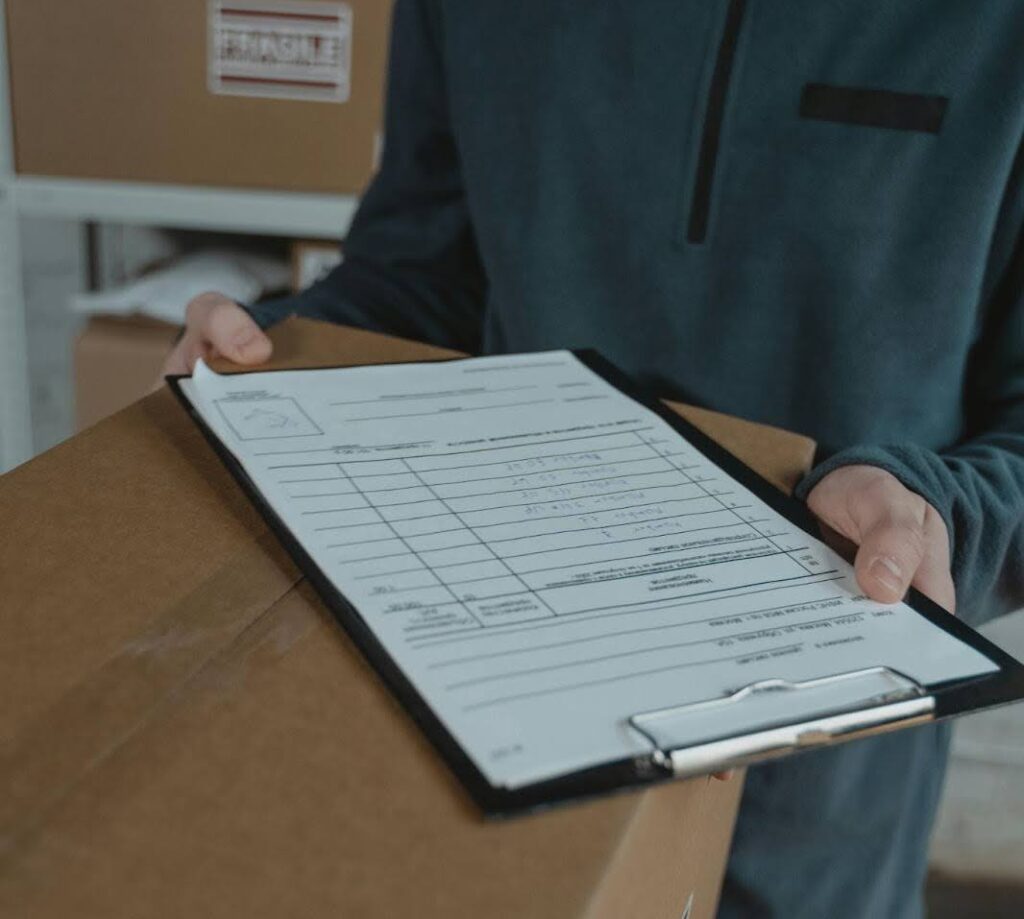Through Bill of Lading: What It Is, Functions, and When to Use It

A Through Bill of Lading is a comprehensive contract for shipping goods across multiple modes of transportation, from origin to final destination. Mastering shipping documentation, including Through Bills of Lading, is important for success in the commercial shipping and logistics industry.
In shipping and logistics, documentation plays a crucial role in ensuring everything runs smoothly. Without proper paperwork, goods can get lost, delayed, or misplaced, causing headaches for both shippers and receivers.
One essential document in this process is the Through Bill of Lading. In this guide, we will explain what a Through Bill of Lading is, what it does, and when you should use it.
Defining the Through Bill of Lading
A through bill of lading is a paper that lets you move goods within a country or to other countries. It’s a document that covers the journey of your goods from the moment they leave the warehouse until they reach their final destination.
The word “lading” comes from “loading,” like putting things onto a ship. In shipping, an ocean bill of lading is like gold.
Here are some key elements you will find in a Through Bill of Lading:
- Shipper Details: This includes information about who’s sending the goods.
- Consignee Details: This tells us who’s receiving the goods.
- Description of Goods: What exactly is being shipped? This part describes the goods in detail.
- Terms of Carriage: How are the goods being transported? This section outlines the terms and conditions of the shipment.
The Main Functions of a Through Bill of Lading

Now that we know what a Through Bill of Lading is, let’s talk about what it does. Its main job is to make an international shipment involving multiple carriers or modes of transport easier. Here’s how:
Facilitating Complex Shipments
When your goods need to travel through different countries or use various types of transportation, a Through Bill of Lading keeps everything organized and legal.
Legal Protection
By clearly stating who’s responsible for what and when a Through Bill of Lading helps protect everyone involved in the shipment.
Logistical Clarity
It ensures smooth coordination between all the parties handling the shipment, reducing the chances of misunderstandings or delays.
Using a Through Bill of Lading isn’t just a good idea; it’s often a necessity for complex international shipments. It provides peace of mind and clarity for everyone involved.
Through Bill of Lading Benefits
A Through Bill of Lading offers several unique advantages for both shippers and carriers.
Simplified Logistics
One key benefit of using a Through Bill of Lading is simplified logistics. Instead of dealing with multiple documents for each leg of the journey, a Through Bill of Lading consolidates everything into one comprehensive document.
This simplifies the shipping process, making it easier for all parties involved to track the shipment’s progress and coordinate logistics effectively.
Reduced Paperwork
With a Through Bill of Lading, there’s less paperwork to manage. One document combines everything, shippers and carriers don’t need to juggle multiple forms and contracts.
Enhanced Shipment Tracking
Another benefit of a Through Bill of Lading is enhanced shipment tracking. By consolidating all relevant information into a single document, shippers and carriers can more easily track the movement of goods throughout the entire shipping process.
Its improved visibility helps minimize delays and allows for better decision-making when unforeseen issues arise.
Through Bill of Lading vs. Other Bills of Lading
A Through Bill of Lading differs from other types of bills of lading in several ways.
Straight Bill of Lading
A Straight Bill of Lading is a non-negotiable document that will deliver goods to a particular individual or entity.
Unlike a Through Bill of Lading, which covers the entire journey from origin to destination, a Straight Bill of Lading is usually used for shipments where the shipping carrier is responsible for delivering goods to a specific consignee without any intermediate stops or transfers.
Order Bill of Lading
An Order Bill of Lading is a negotiable document that allows the goods to be transferred to the order of a named party.
While a Through Bill of Lading consolidates the entire shipment under one contract, an Order Bill of Lading offers more flexibility. It enables transferring the title to the goods to different parties along the supply chain.
This flexibility contrasts with a negotiable bill, where the terms of transfer are predetermined and less adaptable.
House Bill of Lading
A freight forwarder or non-vessel operating common carrier (NVOCC) issues a House Bill of Lading to consolidate multiple shipments from different shippers into a single container.
Unlike a Through Bill of Lading, which covers the entire journey from origin to destination, a House Bill of Lading only covers the segment of the transportation handled by the issuing party.
Master Bill of Lading
A Master Bill of Lading is issued by the carrier or its agent and covers the entire cargo loaded onboard a vessel. It serves as a receipt for the goods and evidence of the contract of carriage between the shipper and the carrier.
Unlike a Through Bill of Lading, which covers multimodal transportation, a Master Bill of Lading is for ocean freight shipments.
Challenges Associated with Through Bill of Lading
Issuing or handling a Through Bill of Lading comes with its own set of challenges. One of the main difficulties is coordinating between different carriers involved in the transportation process.
Since a Through Bill of Lading covers multiple modes of transport. Miscommunication or delays between carriers can lead to disruptions in the shipment’s journey.
Another challenge is navigating the legal complexities across jurisdictions. Each country may have its regulations and requirements regarding shipping documentation. It includes ensuring compliance with inland bill for domestic shipments. Also, discrepancies or issues in the documentation may result in the issuance of a claused bill.
Practical Tips for Managing Through Bill of Lading
To efficiently manage Through Bills of Lading, logistics professionals can follow several practical tips. First and foremost, maintaining accurate and detailed documentation is essential. It includes clearly outlining the terms of carriage, descriptions of goods, and contact information for all parties involved.
Regular updates on shipment status and any plan changes help ensure everyone is on the same page.
The Future of Through Bills of Lading in Logistics
As technology continues to advance, the role of Through Bills of Lading in logistics may evolve. One potential future trend is adopting blockchain technology for secure and transparent documentation. Blockchain can provide a tamper-proof record of transactions.
Plus, the shift towards digital documentation systems may make the processing of Through Bills of Lading more efficient and environmentally friendly. Paperless systems can reduce administrative burdens and simplify documentation processes. It can result in cost savings and increase sustainability.
Conclusion
A Through Bill of Lading is a comprehensive contract for shipping goods across multiple modes of transportation, from origin to final destination. Mastering shipping documentation, including Through Bills of Lading, is important for success in the commercial shipping and logistics industry.
Ready to optimize your shipping operations Through Bills of Lading? Contact Inbound Logistics today for expert guidance and support in managing your shipping documentation effectively.
